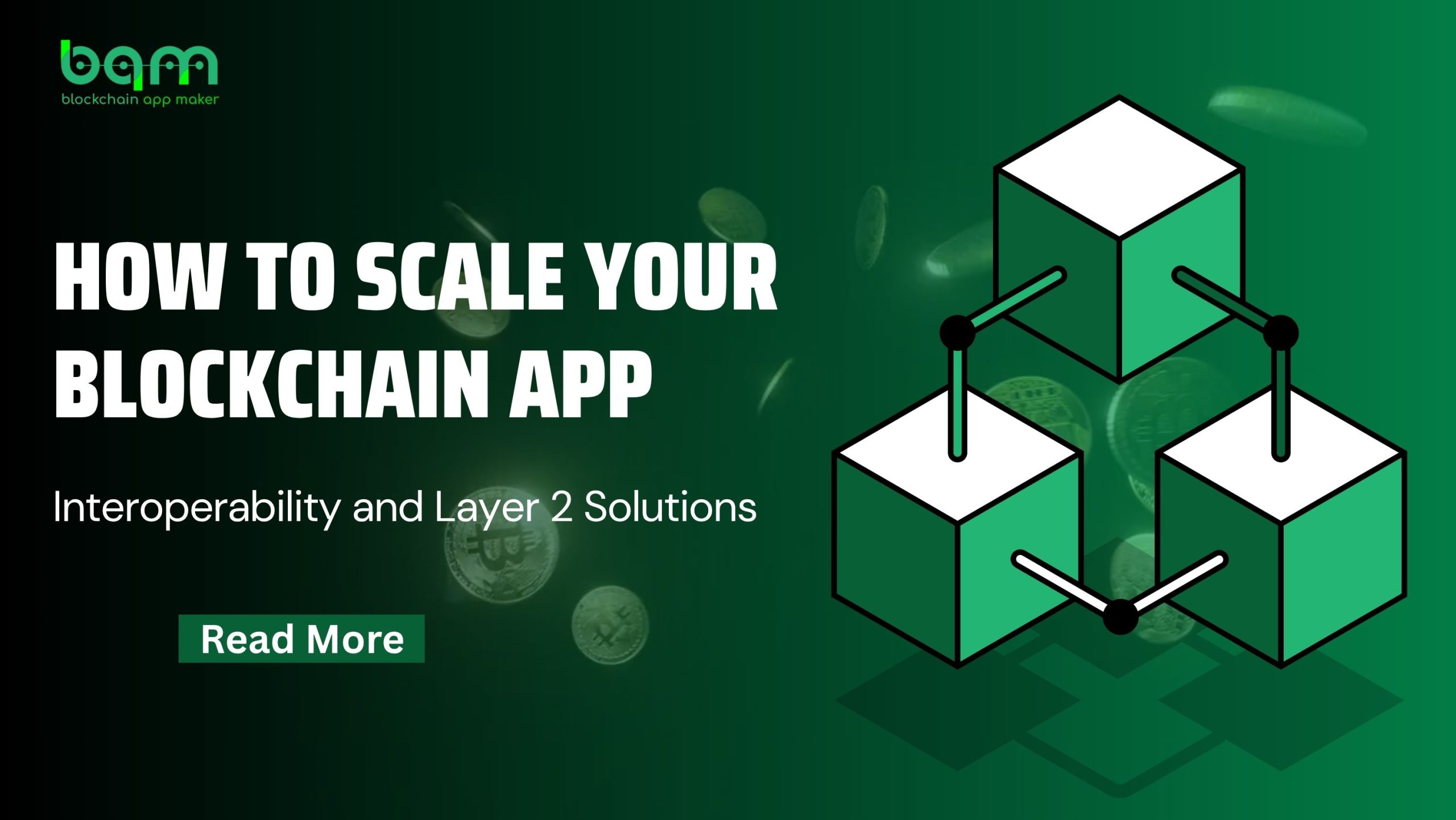Introduction: Why Scaling Is Crucial for Blockchain App Growth
Blockchain technology is transforming previously experimental concepts to see it implemented. Nevertheless, challenges accompanying its use increase as the usage spreads, especially in terms of scalability. Blockchain apps must handle high transaction volumes, offer faster confirmation times, reduce gas fees, and provide seamless cross-chain functionality to remain competitive.
You can be an engineering firm building a DeFi application in the UAE or a blockchain company in Canada; scaling your blockchain application by means of Layer 2 and interoperability is the most important aspect of international growth.
How you can succinctly scale your decentralized application (dApp) with these technologies, as well as tactical approaches, field applications, and advice by Blockchain App Maker, your go-to blockchain development consultants, is what we discuss in this blog.
Understanding the Need for Blockchain Scalability
Common Scalability Challenges:
- High Gas Prices: On Ethereum especially, the higher the congestion the higher the cost of the transaction.
- Slow Transactions: Low TPS affects the users.
- Isolated Networks: Lack of cross-chain interaction restricts dApp functionality.
- Global Latency: Decrease in performance of multi region deployments.
- Developer Complexity: Scale introduces technical debt and lacks clear structure.
Layer 2 Blockchain Solutions: Making Apps Faster & Cheaper
Layer 2 solutions process transactions off the main blockchain (Layer 1), significantly improving speed and lowering costs.
Top Layer 2 Technologies:
- Polygon zkEVM – Ethereum-compatible scaling with zk-rollups
- Arbitrum & Optimism – Rollup-based L2s that reduce gas fees
- StarkNet / zkSync – Privacy-focused and cost-effective zero-knowledge rollups
Business Benefits:
- Have 10x to 1000x the number of transactions per second
- Reduced transaction charges by 90 percent
- Perfect to implement DeFi, GameFi, NFTs and DAOs
- Enhances the user experience across mobile and global users
Interoperability in Blockchain: Powering Cross-Chain Connectivity
In a multi-chain world, actors and apps must communicate between blockchains. Interoperability protocols are the solution to that.
Leading Interoperability Solutions:
- Polkadot: Multi-chain information and smart contract transfer via relay chains
- Cosmos (IBC): It allows inter-blockchain connections in a secure way
- Chainlink CCIP: Facilitates decentralized cross-chain messaging
- Axelar & Wanchain: Token and Contract Interoperability Universal Bridges
Why It Matters:
- Brings liquidity in cross chains
- Facilitates effortless multi-chain dApps
- Facilitates cross-chain NFTs, swaps, and transactions
- De-centralises dependency on one blockchain network
When to Scale: Key Signals You Need Layer 2 or Interoperability
Signs You’re Ready:
- Going through the network congestion
- Having to pay high gas fees
- Selling to wider markets of users
- The connection of numerous blockchain networks
- Building a cross-chain DeFi or NFT platform.
Voice Search Tip:
“How do I know when to scale my blockchain app?”
When your app starts slowing down, costs increase, or you need multi-chain support, it’s time to scale.
Architectural Strategy: Combining Layer 2 with Interoperability
To achieve optimal outcome, both methods should be used together:
- Layer 2 should be used to manage local and high-frequency transactions.
- Get in touch with a variety of ecosystems through Interoperability (Solana, BNB Chain, Ethereum, etc.).
This dual approach ensures:
- Scalability
- Network flexibility
- Cost-efficiency
- Future-proof infrastructure
Security and Compliance: What You Must Consider Before Scaling
Security Best Practices:
- Audited layer 2 rollups and trustless bridges
- Insure that the verifiability of smart contracts is cross-chain
- Build in fallback bridge failure
Regulatory Considerations:
- Ensure Layer 2 networks support KYC/AML compliance
- Evaluate cross-border data sharing laws
- Use interoperable identity protocols for DeFi/TradFi integrations
Real-World Applications of Scalable Blockchain Architecture
Global Use Cases:
- U.S.: Arbitrum enables scalable DeFi apps e.g. Uniswap
- India: Polygon for massive GameFi & NFT marketplaces
- Global: Europe: Cosmos means cross border trade & logics apps
- UAE : Chainlink used in tokenized real Estate & Insurance protocols
How Blockchain App Maker Helps You Build Scalable dApps
Blockchain App Maker is one of the leading blockchain development company that enable new-generation startups and established companies to build on blockchain ecosystems by adopting innovative frameworks and testing strategies.
Our Specialized Services Include:
- Layer 2-Integration (zkSync, Arbitrum, Polygon)
- Cross-chain smart contract development
- Chainlink CCIP, Axelar; bridge protocol set up
- World-wide cloud + distributed hosting services
- End to end scalability consulting
Industries: Fintech, Real Estate, Healthcare, Logistics, Gaming, eCommerce
Build Scalable, Cross-Chain Blockchain Apps with Confidence
The success of a rapidly changing Web3 environment is based on performance, flexibility, and interoperability. Using Layer 2 solutions, your dApp evolves into lightning-fast and cost-effective. Interoperability makes it flexible and future proof.
Blockchain App Maker does not only develop blockchain applications; we scale them worldwide. We provide secure, efficient and scalable blockchain solutions to suit your business model, it could be performance optimization, multi-chain integrations, and much more.
Ready to future-proof your blockchain application?
Contact our experts today to book a free consultation and unlock the next level of blockchain performance.




